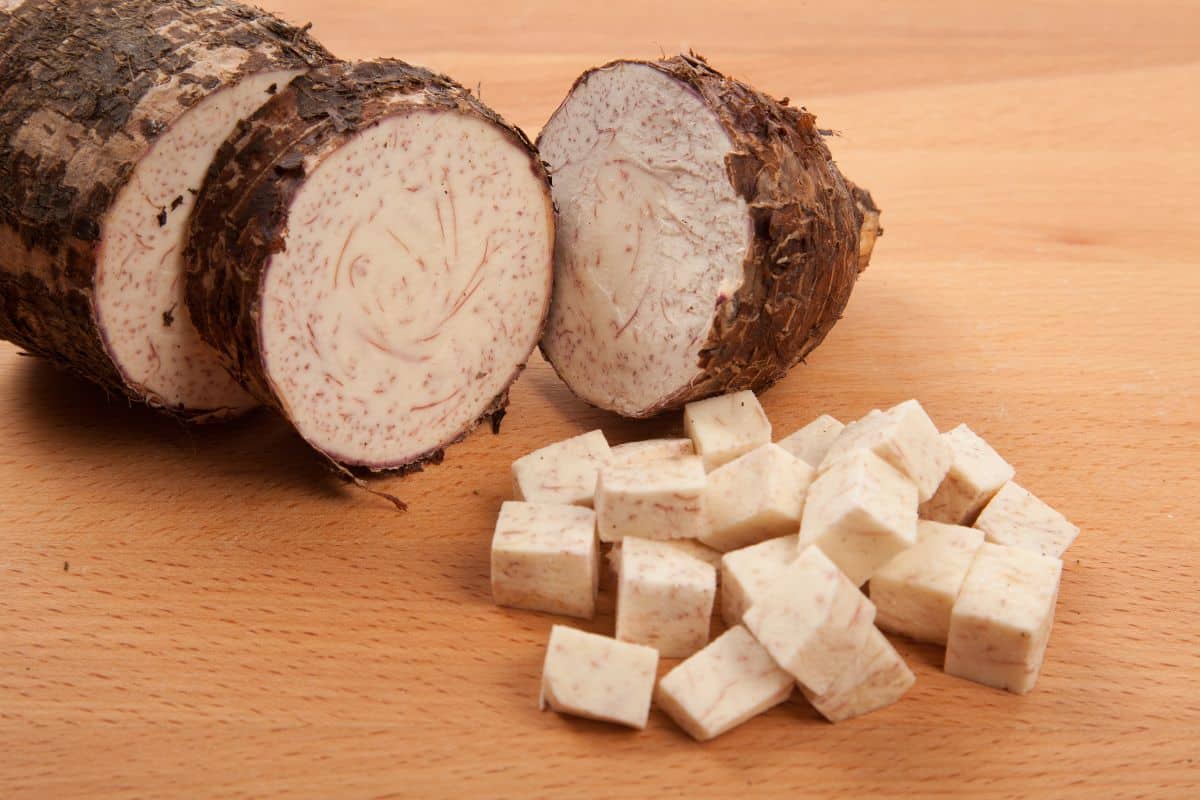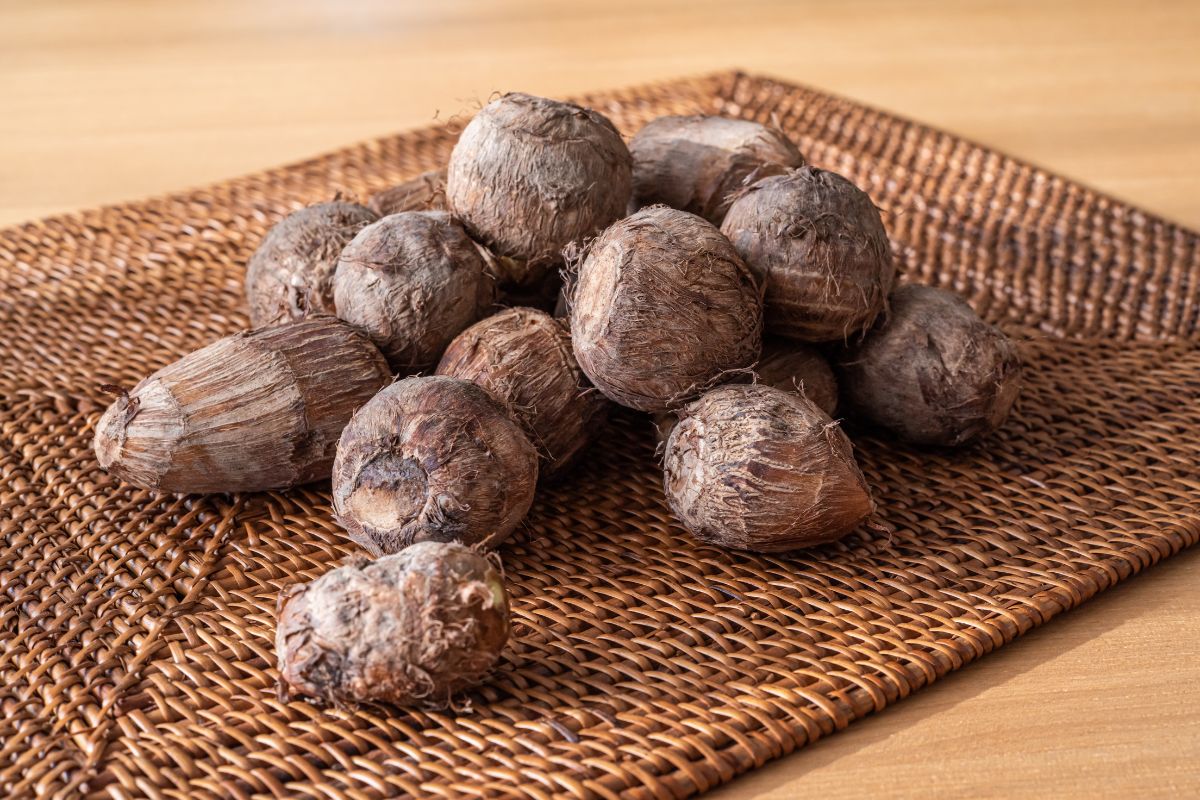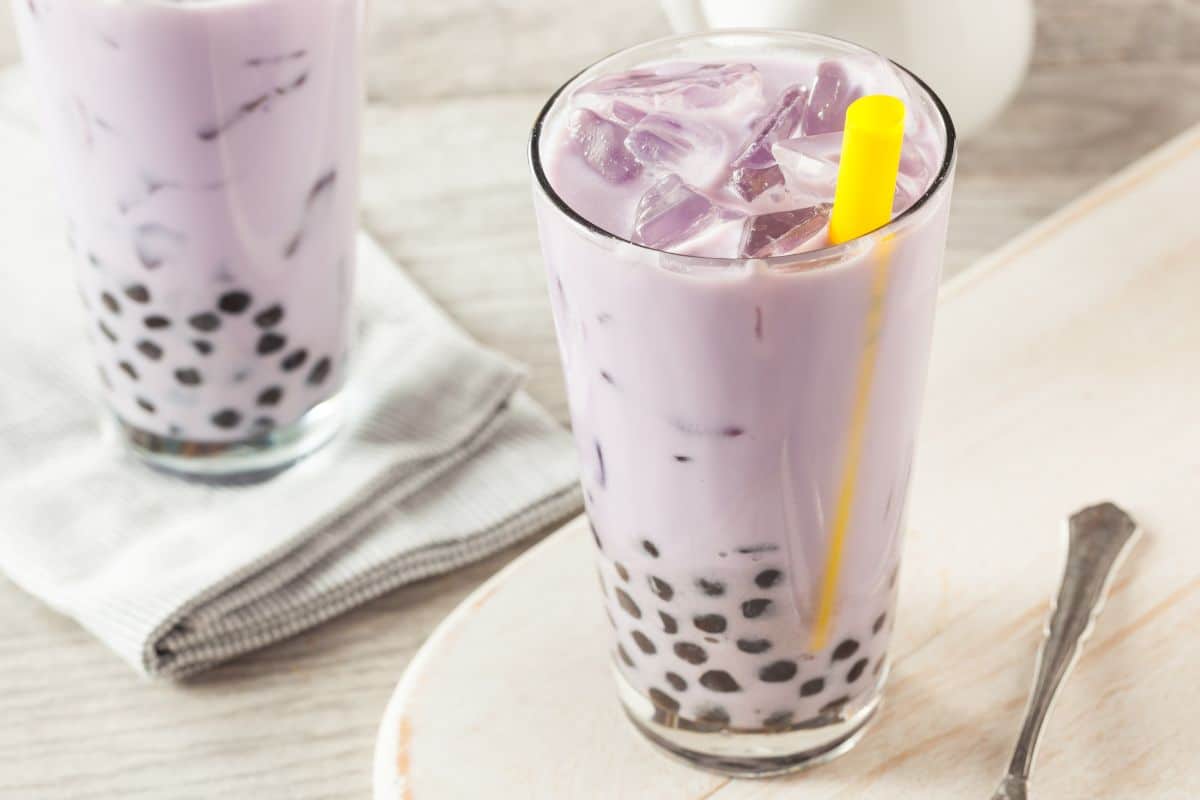If you are here you have probably at least heard of taro. So, you may be wondering what it tastes like, or curious as to what flavors you should be expecting when you buy it.
We have some good news for any vegetable lover who is curious about taro, or who just wants to broaden their veggie horizons, we are going to tell you everything there is to know about it.

As a lover of veggies, we admit, taro is a bit of a weird one, you are unlikely to see it in your average grocery store, and many restaurants won’t even have it.
This means even veggie connoisseurs are unlikely to have heard that much about it.
Today, we will take you on an exploration of taro, to discover all the weird and wonderful aspects of their curious vegetable. Are you ready for a nutritious adventure?
Let’s get started!
What Exactly Is Taro?
Taro is a not so well known root vegetable that is native to Southeast Asia and Africa. It comes from the Araceae plant family and has the scientific name Colocasia esculenta.
Having been cultivated for thousands of years, it is now being grown in multiple corners of the globe.
It is grown in Japan, China, India, and even Hawaii.
The roots of this plant, itself, are white, or sometimes cream-colored, with brown external skin.
You can boil, mash, or even steam this vegetable much like you would a potato, however, its flavor is much nuttier, and it even has hints of sweetness to it.
You can also use taro in stews or soups for some additional flavor or texture.
Taro is also easily dried and can be ground up into flour if you wanted to bake with it or use it as an alternative to wheat-based flour in recipes that are gluten-free.
Taro has several different names around the globe, in Jamaica it is known as dasheen, in Nigeria it is known as cocoyam, in South America it is known as eddo, while in the Philippines it is known as gabi, and Cubans call it malanga.
Regardless of which name you use for it, taro is a superfood and a delicious one at that, and it should get way more recognition than it currently does!
What Is The Taste Of Taro?
Taro comes with a unique flavor that is a bit tricky to describe. However, we will try. The best way we can think of to define the flavor of taro is that it is nutty and sweet in flavor.
However, its texture is also rather starchy, making it ideal to use in soups and mashed potatoes.
Its taste is mild enough that it would even be fine to eat it raw if you wanted to do so.
In comparison to other vegetables, taro is fairly similar to sweet potatoes or yams in texture. However, the difference between these vegetables is mostly in their color.
Sweet potatoes are often yellow or white on the inside, but taro is a purple-gray color on the outside but white on the inside.
Of course, taro also has a nuttier flavor than sweet potatoes and yams do.
What Is Taro Milk Tea?
The concept of a milk tea made from taro might seem bizarre to you, however, it is actually quite nice, and we recommend trying it.
Taro tea is a delicious type of bubble tea that is made with taro root powder. Alternatively, it can be made with mashed and cooked taro.
It is creamy, sweet, and even a bit nutty in its flavor. It has also got a beautiful purple hue that comes from the taro root.
Taro root bubble tea will often contain tapioca pearls as well, which contribute an extra bit of sweetness to the beverage.
It is this unique combination of different flavors that makes it so delightful, refreshing, and ideal for summer days when you need a boost, or just as an afternoon pick-me-up part-way through a tough day.
Benefits Of Taro Root

As well as how tasty this root vegetable is, taro also happens to be highly nutrient-dense.
It is super high in fiber which is ideal for anyone who needs to give their digestive system a boost. Taro can contribute its fibers to help keep your digestive system regular and healthy.
Since it is also low in GI, it won’t spike your blood sugar levels either.
Taro root also contains essential minerals too, including calcium which can help to strengthen your bones. It also contains A and C vitamins to help to boost your immune system as well!
Taro root even has some protein in it, which makes it a great addition to your diet if you need a meat alternative as a vegan or vegetarian.
It will give you an awesome protein boost with plenty of other amazing perks.
Overall, we can say that taro will provide you with endless nutritional benefits which make it worthwhile adding to your diet regularly, if you can get your hands on it regularly enough, of course.
How Do You Cook Taro?
Taro is one of the root vegetables which you can cook in a variety of ways, all depending on what your preferences are, and what the dish you are trying to make is.
So, for one example, you could boil taro, and this would be usable as an ingredient in soups or even curries, although fried-up pieces do make an awesome side dish, or you could even use it as a snack!
Taro works well in many other ways too, it even does well if you blend it up into smoothies, and of course, it also adds all those essential nutritional values when mixed into a smoothie as well, making it an ideal choice for getting some protein into energy boosting smoothies.
You could bake taro into baked goods items as well, putting it into bread, or muffins.
There are so many options for how you can use taro in cooking.
Ways To Use Taro
If you are looking for some inspiration on how you could use taro in your cooking routines, here are a few ideas to get the ball rolling for you.
Liquid Applications
- One of the best ways to use taro is to make a taro bubble tea. This is one of the best ways you can cool down in a hot summer. All you need is some brewed-up tea, a dash of sugar, taro powder, and some milk. Mix the whole mixture, and you will have a cooling but delicious beverage!
- If you love ice cream, why not try taro ice cream, it will give you something sweet and delicious. You only need taro powder, condensed milk, and some cream, add cookie crumbles for something extra. Mix it all, and you have your very own homemade ice cream with health benefits.
Dry Use Applications
- If you are a bread lover, consider taro bread. This is a great idea for those who are on the move a lot. You only need butter, flour, yeast, salt, sugar, and mashed-up taro root. Once the dough has risen to be worked with, you can make loaves or buns! So easy and very delicious!
- If you are more of a snack person, you may find taro chips to be more to your taste. You can enjoy taro as a side dish this way. You just need to begin by preheating your oven to around 350 degrees Fahrenheit, then peel your taro root and cut it up into cubes.
Place the pre-cut cubes into a bowl and mix them with garlic powder, olive oil, onion powder, pepper, and salt until the cubes are coated evenly.
Then, transfer into cubes onto a baking sheet that has been lined with parchment paper. Proceed to bake for up to 25 minutes, or until they are golden brown.
- Taro powder is also useful. You can make this by roasting up the raw taro until it becomes lightly browned, before proceeding to allow it to cool down completely before you grind it up into a fine powder.
You can grind it up using a blender or food processor. Once you have done this, make sure you sift out any large pieces that may have been missed when you ground up the powder.
Then, you can store this for up to 6 months in an airtight container.
You can use taro powder in many recipes, but it can also be sprinkled as a garnish, as it will add extra texture and flavor.
Making Taro Milk Tea

If you didn’t guess already, we are crazy about taro milk tea, it can be enjoyed cold but is best enjoyed hot or even warm.
You can make this in under 10 minutes as well. So, we thought that if this vegetable intrigues you, we should share this recipe with you.
Give it a try!
(Note: This recipe will make 2 servings, half or double as required)
What You Will Need
- 2 cups of water.
- 2 tea bags of black tea or jasmine tea. You can also use the equivalent of this amount in tea leaves if you have any.
- 2 tbsp of unsweetened taro powder.
- 2 tbsp of easy-to-cook tapioca or boba pearls.
- 1 cup worth of coconut milk, you can also use any other dairy-free, or dairy milk depending on your preference.
- 2 tbsp of taro syrup.
- Ice (only if serving cold).
How To: Step-By-Step
- Begin by cooking up the easy-to-cook boba or tapioca pearls. Simply follow the instructions on the packaging to do so.
- Once you are ready, drain them well and then set them in a bowl alongside the taro syrup. Doing this will help to prevent the pearls from sticking to one another. Then set the bowl to one side.
- Now, heat the cups of water for the tea, it should reach 180 degrees Fahrenheit or 80 to 85 degrees Celsius. Then, add the tea into it and allow your tea bags or tea leaves to simmer for around 3 to 5 minutes long.
Once the tea is ready, remove the tea bags. If you leave them too long, it can lead to over-brewing which always tastes bitter.
- (Optional step) if you are drinking this tea cold, then you will want to allow the tea to cool down. 10 minutes should be plenty of time.
- Now, add in the coconut milk and taro powder to a blender jug or food processor, a 30-second cycle should do the trick. However, do make sure that there are no powdery lumps left in the beverage once you have blended.
- Now, it is time for you to put all of the above ingredients together into one mixture.
- Divide up the boba or tapioca pearls with the syrup into 2 glasses (or however many you are using), and if you are planning on serving this tea cold, then now is the time to add in the ice cubes as well.
- Per glass, you will want to add around half of the tea, and half of the taro flavored milk.
- Finally, serve with a large-mouthed straw (so you can enjoy the pearls too) or a spoon, and enjoy this tea. Introduce your friends to it!
Recipe Tips
- With the use of taro powder, if you are using a sweetened version you will also want to reduce the amount of taro syrup you use. If you do not then the tea may end up being way too sweet.
- You can use different milk types to make this, so it can be vegetarian or vegan depending on what you choose. However, we find that almond, soy, and oat milk are all amazing choices and are not only healthy but work well in this recipe!
- When using boba or tapioca pearls note that they can take a good 45 to 60 minutes to cook. This can be a very long time. So, instead, we recommend using easy-to-cook versions. The pearls should be warm, also.
- In a saucepan, you can make a taro syrup substitute, simply by adding brown sugar and water at a 1:1 ratio. Heat on medium and bring it to a light simmer, constantly stirring. It should thicken after 3 minutes or so.
- If you want to make a sugar-free version, then you should add your tapioca or boba pearls to cold water to prevent them from sticking instead.
Overall
Taro is a delicious root vegetable that not enough people know about. It has a unique flavor, being nutty and quite sweet.
You can use it in many aspects of your cooking, but even better, it can make bubble tea!
Taro powder is an incredibly useful ingredient to have if you like to experiment in the kitchen.
Get your hands on some fresh taro root or some taro powder and start experimenting with it. It can do more than you think and is so delicious, you wouldn’t believe it is even a vegetable!






